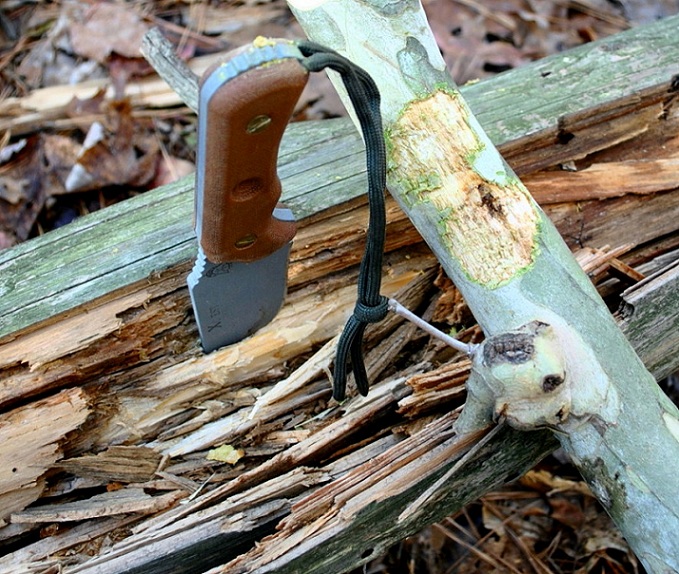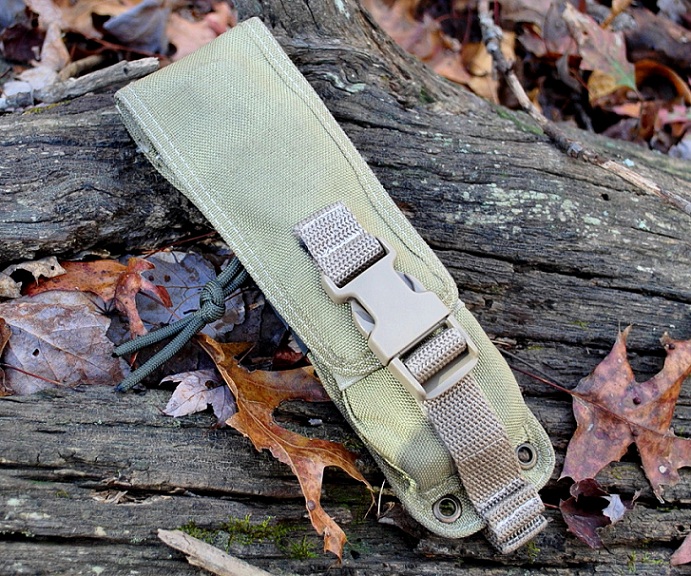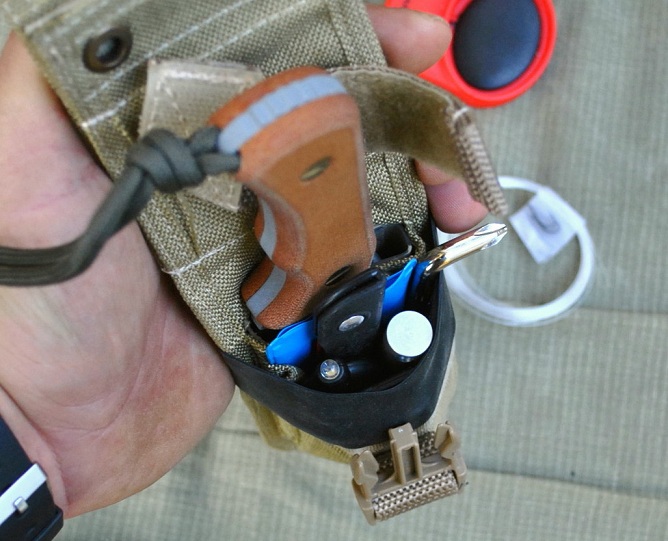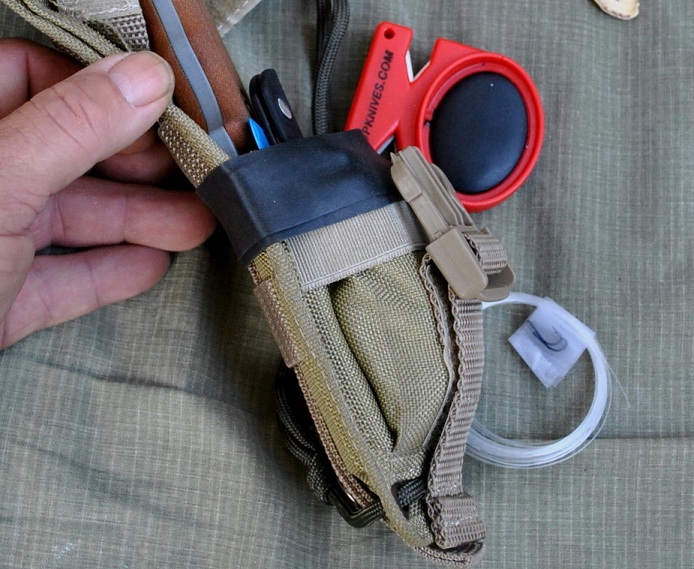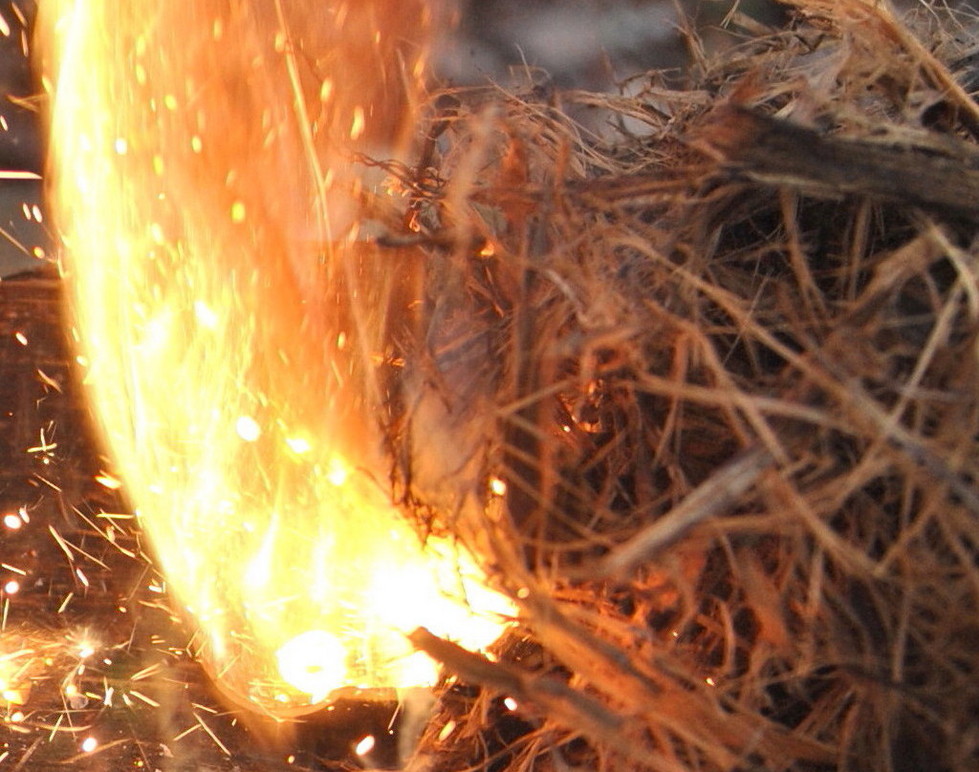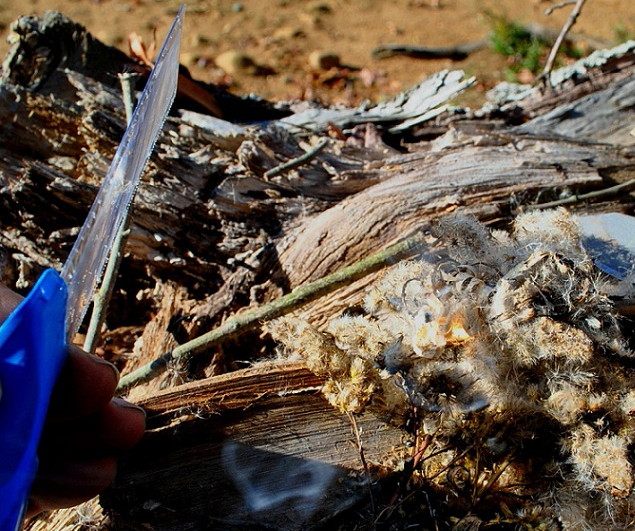Southeast Wilderness Survival
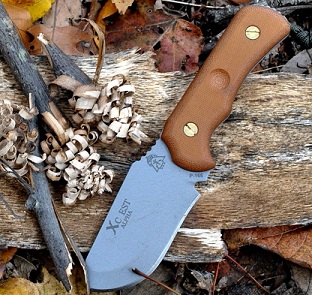
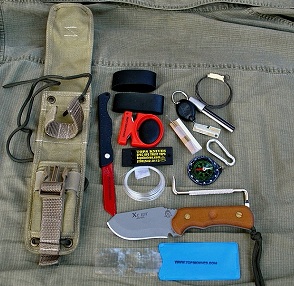
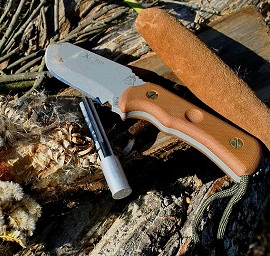
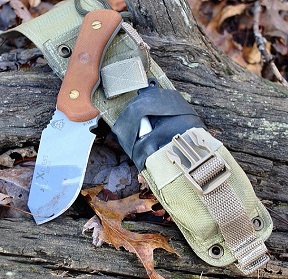
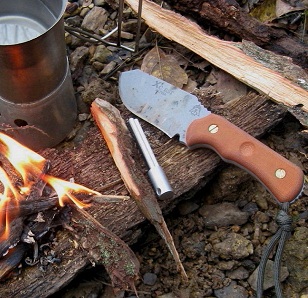
TOPS Knives Xc EST ALPHA
The Xc EST knives by TOPS Knives are serious tools for the outdoor adventurists. The acronym XcEST stands for Cross Country Emergency SupportTool.
The Specs Are:
OAL 7.5"
BLADE LENGTH 3 1/4"
THICKNESS 3/16" +
Blade width ...........1 1/2" average
Blade material...... 440 C RC 58 - 59
Handle material.....canvas micarta w/bow divot
Sheath material..... Ballistic nylon with insert, it is available in coyote tan or tactical black.
The Xc EST knives by TOPS Knives are serious tools for the outdoor adventurists. The acronym XcEST stands for Cross Country Emergency SupportTool.
The Specs Are:
OAL 7.5"
BLADE LENGTH 3 1/4"
THICKNESS 3/16" +
Blade width ...........1 1/2" average
Blade material...... 440 C RC 58 - 59
Handle material.....canvas micarta w/bow divot
Sheath material..... Ballistic nylon with insert, it is available in coyote tan or tactical black.
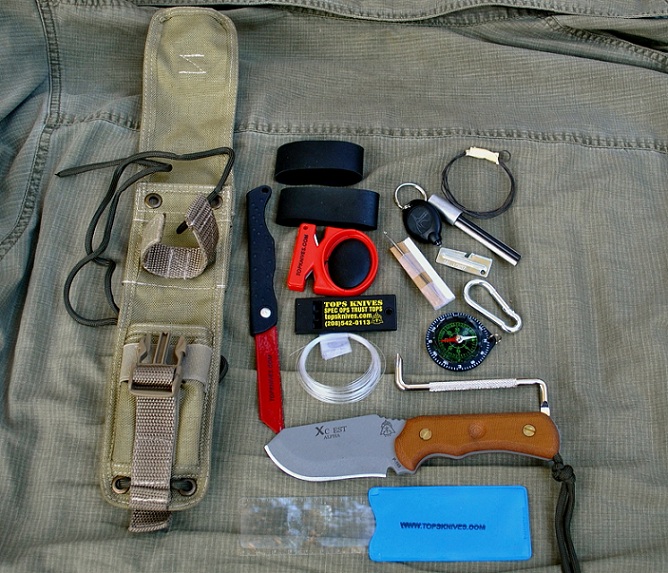
The X-CEST is one of the most well thought out and comprehensive knife-based survival systems I have run across. It provides the user with many tools and many options in the bush. The items included in the system are:
*Survival Saw
*Lansky Sharpener
*2 Ranger Bands
*Compass
*Fishing Line
*2 Fishing Hooks
*Offset Screwdriver
*P-38
*Snare Wire
*L.E.D. Light
*Sail Needle
*Fire Starter
*Razer Blade
*Snap Link
*2 Safety Pins
*1 Fresnel Lens
*Survival Saw
*Lansky Sharpener
*2 Ranger Bands
*Compass
*Fishing Line
*2 Fishing Hooks
*Offset Screwdriver
*P-38
*Snare Wire
*L.E.D. Light
*Sail Needle
*Fire Starter
*Razer Blade
*Snap Link
*2 Safety Pins
*1 Fresnel Lens
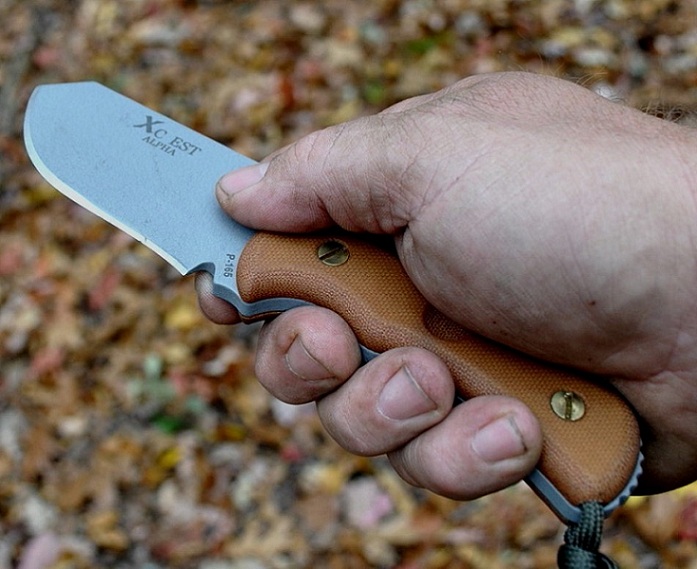
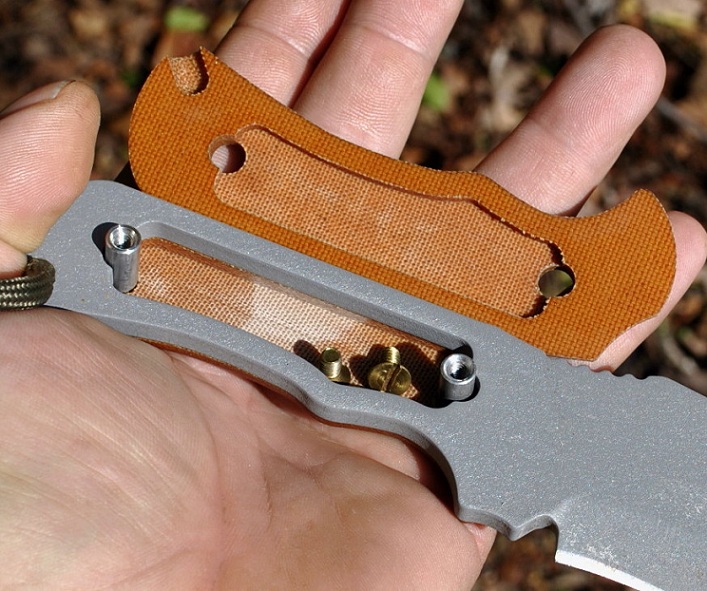
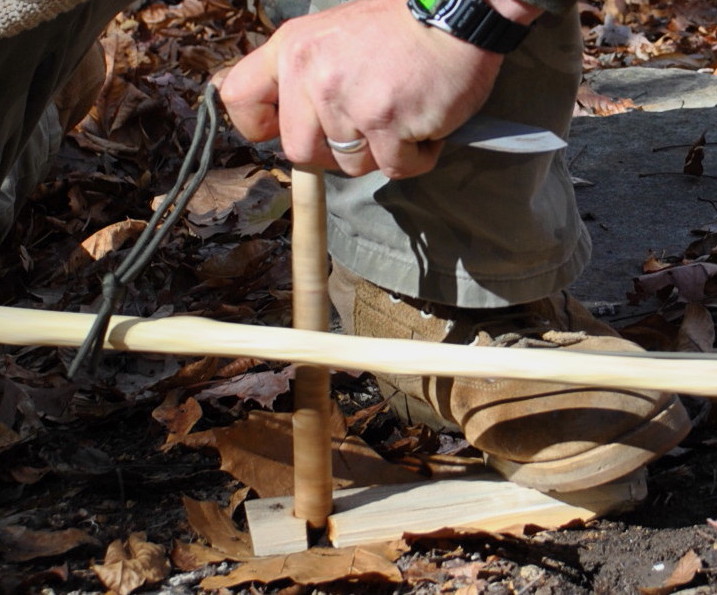
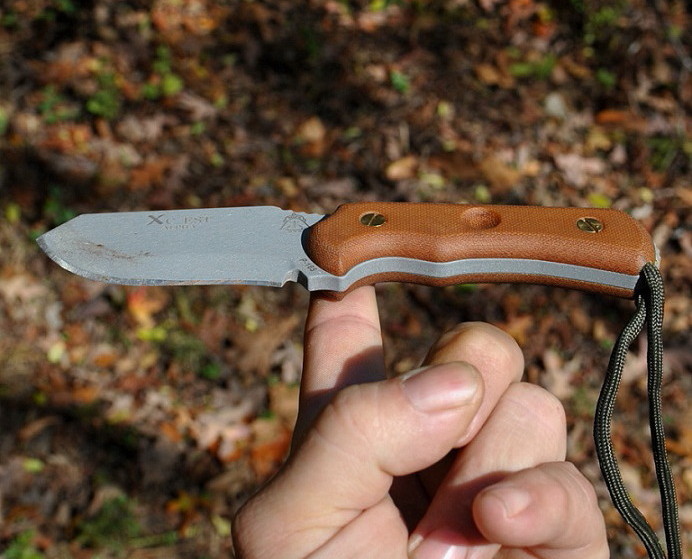
I own and use a few knives made by TOPS and I think the XcEST has the most comfortable handle so far. Handle ergonomics are important in the field when using the knife to fashion other tools and utensils. Good handle ergonomics keep the hand and wrist from becoming fatigued quickly.
The handle features don't stop at comfort. The handle scales also sport of pre-made divot for use with the spindle of a fire bow. This is great because that is one time-consuming step that isn't necessary in order to produce fire using the fire bow method.
The handle scales of this knife are easily removable and the knife can be lashed to a pole for making a field expedient spear. The hollow space can also be used to store some smaller items.
The handle features don't stop at comfort. The handle scales also sport of pre-made divot for use with the spindle of a fire bow. This is great because that is one time-consuming step that isn't necessary in order to produce fire using the fire bow method.
The handle scales of this knife are easily removable and the knife can be lashed to a pole for making a field expedient spear. The hollow space can also be used to store some smaller items.
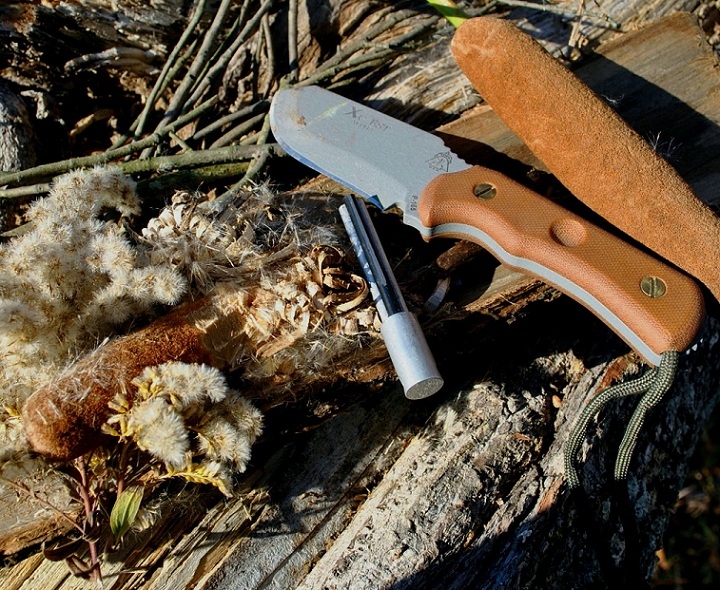
Knowing that the ability to make fire is a very important element of survival the guys at TOPS made sure the Xc EST comes well appointed for the task of making fire in the field under various circumstances and even under the worst of conditions. Along with the spindle divot in the handle the knife comes with a magnesium fire starter which consists of 2 magnesium rods and 1 ferrocerium rod press-fit into an aluminum cap. This little tool is really handy to have along on any adventure. The very hot sparks from the ferro rod can be used to ignite various organic tinder materials that are commonly found within the wilderness environment. The seed tufts of many plants such as horse weed and English thistle will burst into flames from a single spark in dry conditions.


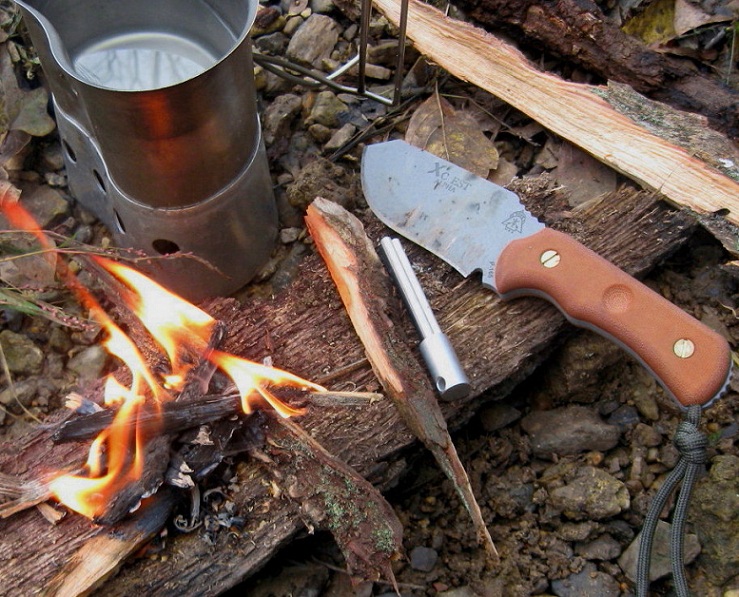
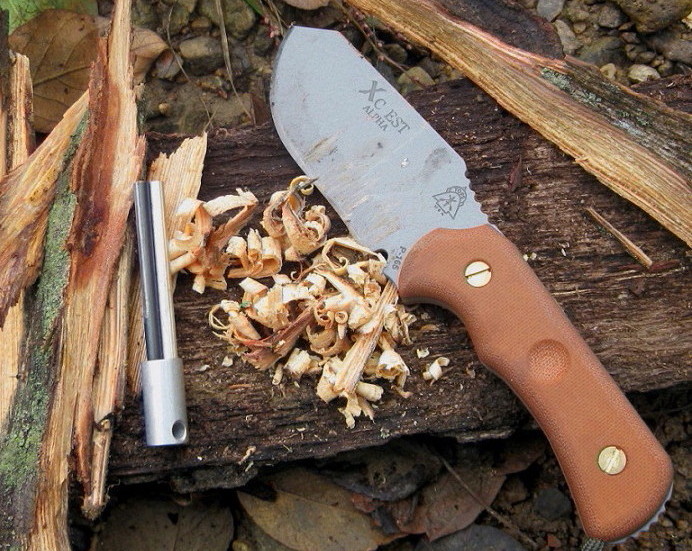
The plastic fresnel lens that is supplied with the knife is a very useful piece of kit. It's good for more things than just reading fine detail on a map or removing very fine splinters. On sunny days it is also very handy for starting fires. By making use of organic tinder materials that may be found in the general area, or even paper from your pockets, and the rays of the sun you can have fire while conserving your resources. This way you don't needlessly use up the magnesium. By doing this you also conserve your energy reserves and save the edge of the knife for other uses.
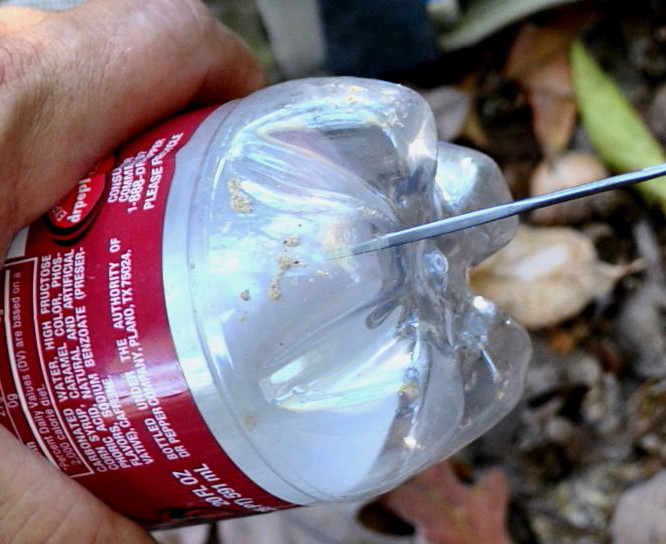
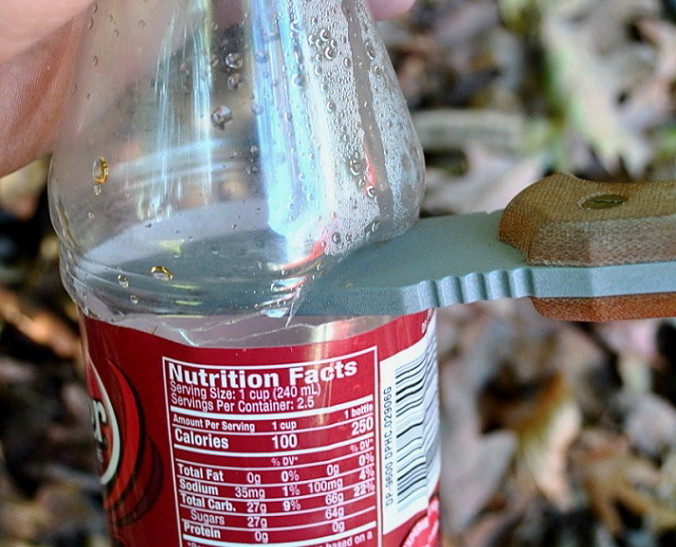
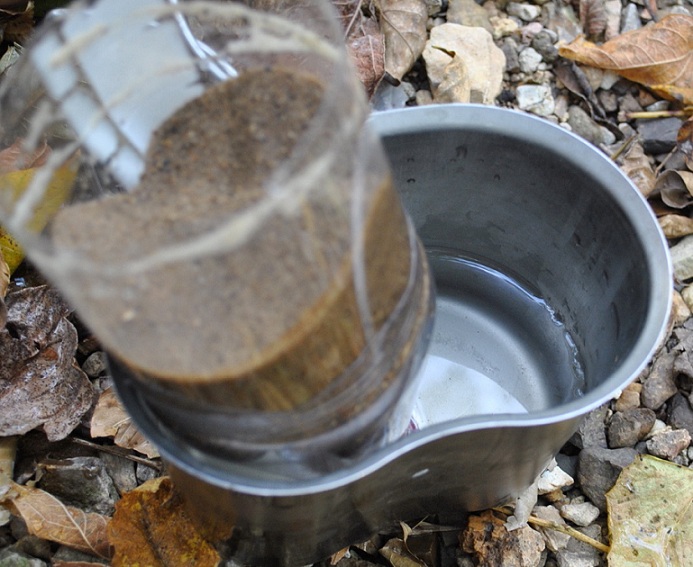
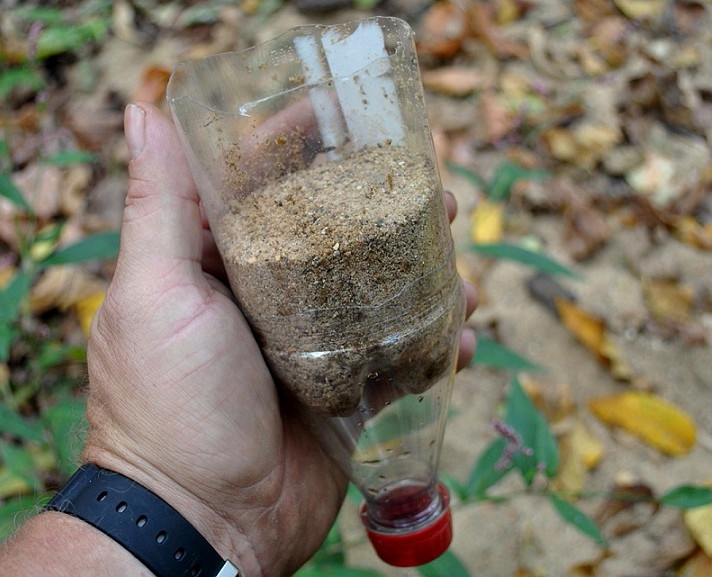
The blade geometry of this knife is much like that of a traditional skinner. Because of this the blade isn't exactly the best for boring small holes. However it is much better at skinning than a slimmer pointier blade, and it is also a more durable point. The knife was intended more as a tool than as a weapon.
To help overcome this obstacle the guys at TOPS added in a couple of other tools that do work well for boring small holes. The heavy-duty sail needle is a great addition to the kit. It's great for using with fishing line to repair clothing, sewing materials together for a shelter, and it also works great for boring small holes for a field expedient water filter. This can be done using bamboo as well, but in this case I used and empty plastic drink bottle. The advantage the plastic bottle has over the bamboo is that the clear sides allow you to see if there is any channeling in the sand.
To help overcome this obstacle the guys at TOPS added in a couple of other tools that do work well for boring small holes. The heavy-duty sail needle is a great addition to the kit. It's great for using with fishing line to repair clothing, sewing materials together for a shelter, and it also works great for boring small holes for a field expedient water filter. This can be done using bamboo as well, but in this case I used and empty plastic drink bottle. The advantage the plastic bottle has over the bamboo is that the clear sides allow you to see if there is any channeling in the sand.
This knife has a tang extension that works great for times when you need to using the knife in a chisel fashion. This is great for when you need to dig into a decayed log for drier fire starting materials, or grubs to eat, or need to chisel through ice to obtain water. I really like that the guys at TOPS textured the surface of the extension to prevent glancing blows and to keep the applied force where it needs to be. The knife had no issues at all with being repeatedly struck by a baton, and I never experienced a glancing blow. For which my knuckles were very thankful.
The heavy-duty 3/16-inch thick blade help up well to all of the lateral force it was subjected to in the process of digging into this decayed log and prying out chunks of the solid heart in my hunt for drier tinder materials and kindling for starting a fire.
The heavy-duty 3/16-inch thick blade help up well to all of the lateral force it was subjected to in the process of digging into this decayed log and prying out chunks of the solid heart in my hunt for drier tinder materials and kindling for starting a fire.
The heavy blade of this knife really came in handy one rainy fall afternoon. There had been a light rain falling all day after harder rains the day before and everything around me was soaking wet. Here in the south east we are blessed with a gift of nature that works very well for starting fires in just such conditions. The resin-rich heart wood of some dead pine trees is a hydrophobic and highly flammable substance. These knots are very dense and difficult to split, and it takes a tough tool to handle splitting it without sustaining damage to the edge. The Xc EST handled the abuse of batoning with no trouble at all, and even with the lower saber grind, the very sharp edge easily handled whittling the pile of fine slivers needed to ignite from the sparks of the ferro rod. It didn't take long at all to get a fire started and get some water on for a cup of bullion to warm up my insides.
When a knife only has a blade length of 3-1/2 inches you don't normally tend to think of it being used as a chopping tool. However out in the bush you never know what you may have to deal with in order to overcome adverse circumstances. Weather, as well as predators, can make it necessary to build a substantial shelter, or perhaps you may need to build a litter that will handle the weight of an injured person, and the tools you have with you will be all you have to work with. The center balance and swelled pommel of this knife allow you to make more efficient use the short heavy blade by shifting to a rearward grip. By using a wrist lanyard and a three-finger grip on the handle I was able to take advantage of the heavy mass and sharp edge. I was able to chop through 2-inch limbs of well-seasoned sycamore in a surprisingly short amount of time.
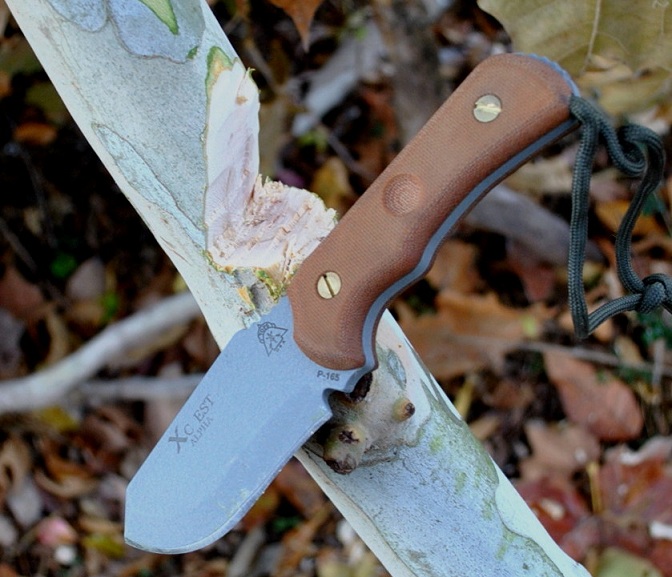
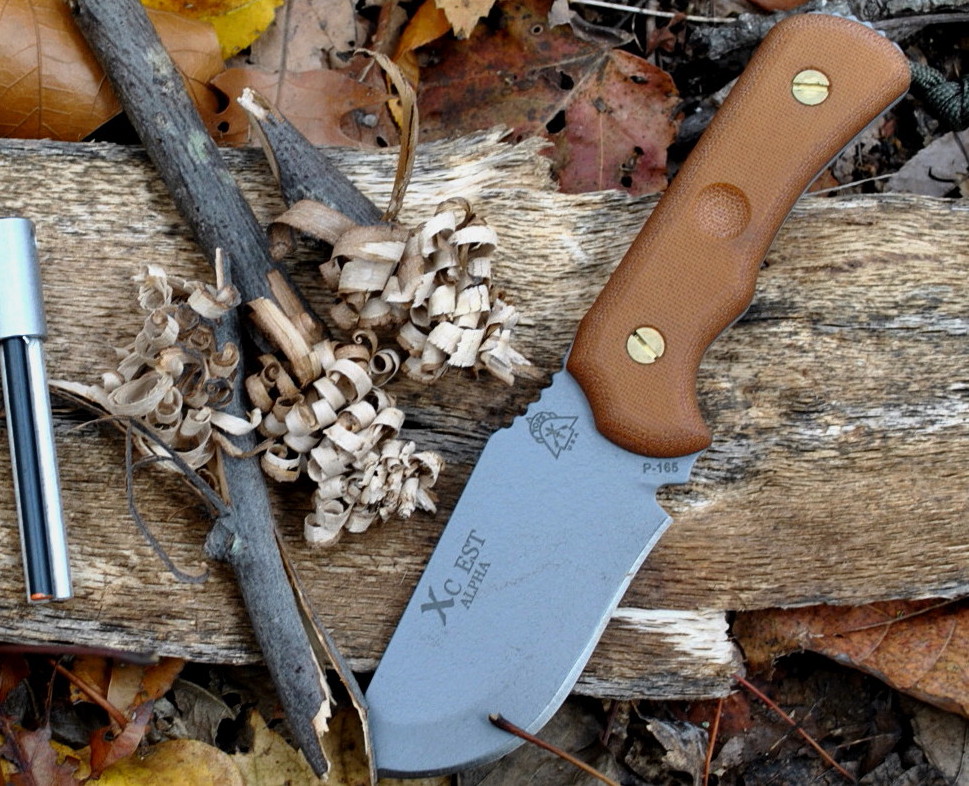
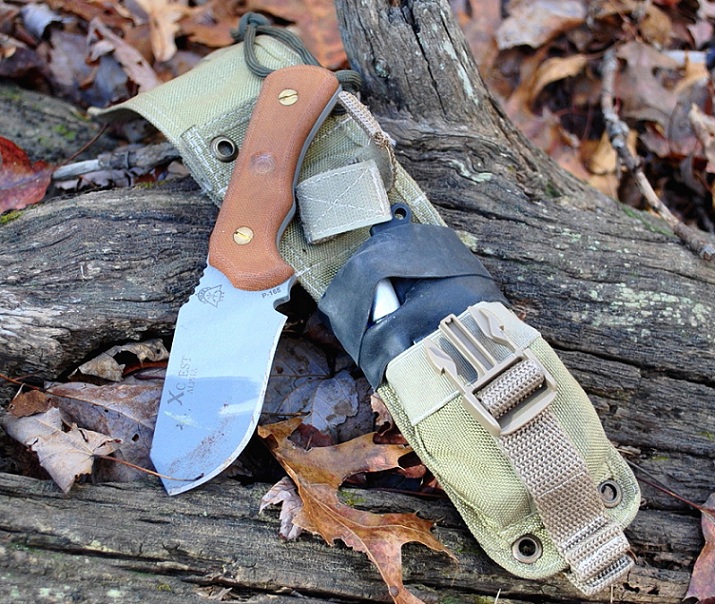
After two weeks of intense testing in the field I must say the knife definitely lives up to its name and is an excellent asset in the bush. I think the knife is exactly what a good survival knife should be. It does well at many tasks and is extremely durable. It is corrosion resistant for working in salt water or salt air environments. It has great ergonomics and plenty of working edge but doesn't add a lot of weight and excessive mass. It has a nice comprehensive kit on-board that bring a lot of capability to the table and gives the user a great wilderness toolbox and a great deal of options. In the wilderness options are always a good thing.
The Xc EST ALPHA is definitely a very capable cross county emergency survival tool that has no trouble earning its keep.
The Xc EST ALPHA is definitely a very capable cross county emergency survival tool that has no trouble earning its keep.
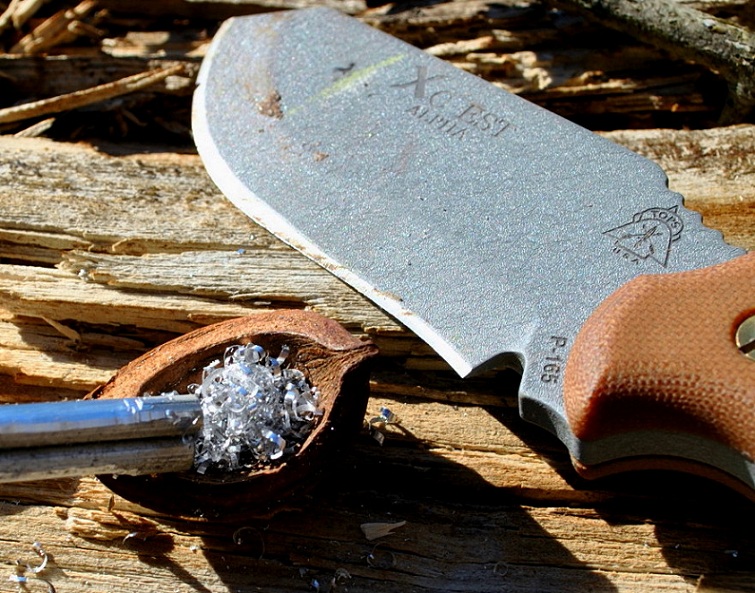
The magnesium part of the fire starter comes in really handy on damp days, or when you are working with stubborn tinder materials that are harder to light. Magnesium shavings are very light and it is a good idea to have or make a windbreak when working with a magnesium fire starter. One thing I like to do when using magnesium shavings is to find a nut shell, or something similar in size and shape, to use as a collection vessel. I scrape a sizable pile of shavings into the vessel so that a have a decent amount of tinder to work with.
In this shot you can clearly see the high angle of the secondary bevel. The knife came to me with an extremely sharp edge.
In this shot you can clearly see the high angle of the secondary bevel. The knife came to me with an extremely sharp edge.
Magnesium shavings are easily ignited by the white hot sparks of the ferro rod, which is itself partially made up of magnesium, and it burns at the very high temperature of 5800 degrees Fahrenheit. It does burn fairly quickly, but it burns so intensely that it will dry and ignite stubborn tinder materials that have a bit of moisture in them. Materials like the oily fibrous bark of the cedar tree, which makes a great tinder material, can retain high amounts of moisture even for several hours after a rain or indefinitely in long periods of fog and mists. The intense heat of the magnesium works well for drying an area of it out well enough to ignite.
